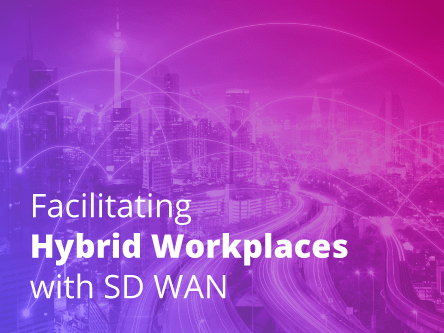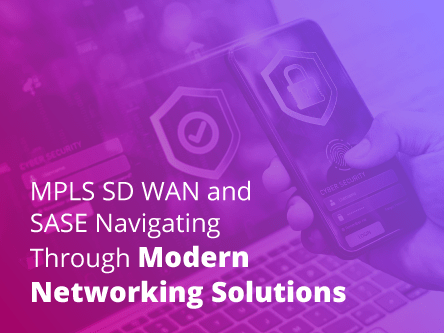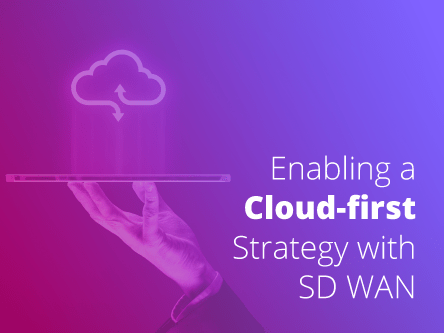Work-from-anywhere and hybrid work models are now the norm across the world and have indeed become key to retaining staff. Businesses must ensure great employee experiences and complete network security regardless of whether team members collaborate from home or work out of an overseas hotel.
The globally distributed and dynamic workforce, along with the multiplicity of devices through which they access the organisation’s network mean that IT security teams cannot be certain of the extent of their network perimeters and potential attack surfaces. Without clear network visibility, it can be a struggle for IT security teams to protect crucial resources, data, and assets dynamically and comprehensively. Today’s organisations typically have dozens, if not hundreds, of security tools at different points such as their data centres, cloud instances, networks, individual apps, and hardware endpoints. These point-based security solutions not only do not provide visibility throughout the entire network, but are also too cumbersome to manage. That’s because IT teams must configure, implement, and manage tens or even hundreds of solutions, leading to lack of productivity, and unnecessary complexity.
Across the world, the hybrid work and work-from-anywhere models have led to most organisations relying excessively on overloaded VPNs for network communications. VPNs make delivering the user experiences that modern IT consumers expect a challenge as the number of cloud-based SaaS applications proliferate. Having too many remote users and high usage of SaaS applications mean that more data is moved between branch offices, remote locations of users, and public clouds than back to the data centres. Having more data transferred through the unpredictable internet and processed far away from the users’ locations leads to higher latency, lower availability, and sub-optimal performance.
Why Enterprises Are Opting for SASE
Enterprises are increasingly turning to the Secure Access Service Edge (SASE) framework to protect their networks, resources, and assets against today’s unique networking and security challenges. SASE combines network security services from a Security Service Edge which includes Cloud Access Security Broker (CASB), Zero Trust Network Access (ZTNA), Firewall as a Service (FWaaS), and SD WAN into a single network security service delivered through a unified control in the cloud. It utilises policy-based security and the identities of users, devices, branches, or applications to ensure secure access regardless of the location of the data, applications, or devices connecting to the network, and also provides Data Loss Protection (DLP). The tight integration of SASE elements, SD WAN and SSE will deliver even greater benefits.
Compared to point solutions, SASE does a much better job of thwarting cyber-attacks such as ransomware and malware by dynamically securing threat response at the edges while ensuring overall centralised cloud-based security control. Traditional solutions lack a holistic view of all edges as well as the data analytics capabilities to establish approved security baselines and define unacceptable behaviour patterns. SASE not only provides a pervasive view of all edges and their related data using the cloud, but it also correlates the data with AI. This correlation helps prevent advanced malware that constantly change their identity to evade detection as well as zero-day attacks that take place when hackers exploit software flaws before developers get a chance to address them.
Upgrading Security Frameworks for Hybrid Working Environments
Businesses can address most of their current digitalisation and security modernisation challenges at one go with a cloud-based SASE framework in place. The cloud-based security framework enables five key use cases that are worth mentioning.
1. Modernised WAN Optimises Connectivity
SASE uses SD WAN with a private backbone so that less network traffic is routed through the internet. The private backbone helps surmount latency challenges from the internet and connects the individual Points of Presence (PoPs) used for networking and security software. A predictable low latency network experience from anywhere in the globe improves connectivity and increases employee productivity.
2. Secure Branch and Remote Access Enablement
SASE can provide secure remote access to corporate resources for employees, contractors, and partners working from any location. By connecting all branch and remote locations to the SASE PoPs, it protects the traffic with enterprise-grade cloud-based security standards. All security service updates and patching are handled by the SASE provider, and the entire WAN is protected by an up-to-date security stack ensuring dynamic and comprehensive security control.
3. Improved Access and Control Support Faster Cloud Adoption
Optimising cloud application access is just a matter of adding a single application-level rule defining where cloud application traffic should egress the SASE cloud. By routing traffic to the SASE PoP closest to the cloud data centre, the latency between the SASE and major cloud providers in the PoP is essentially zero.
4. Upgraded Security and Seamless Cloud Access Enhance User Experiences
SASE is superior to VPNs in scalability and supports seamless 24/7 cloud access for the entire workforce. It incorporates low-friction Zero-Trust Network Access (ZTNA), ensuring that only authorised users and devices can access corporate resources, regardless of their location. The framework ensures that all remote employees experience faster and more secure cloud and network access for easier collaboration, thereby improving user experiences and protecting the entire network from evolving and sophisticated cyber threats.
5. Higher Visibility and Centralised Management Maximise Efficiency and Lower Costs
SASE solutions expand and extend network monitoring capabilities to enable faster, deeper, and real-time threat response while ensuring that the expanding network perimeter is dynamically protected. They simplify network security management with a single cloud-based console and provide richer data contexts on threats, saving time, effort, and costs. Real-time analytics make network optimisation easier by predicting potential outages and pre-empting them to provide the best network access experiences to all stakeholders.
Best-in-class SASE solutions provide organisations seamless cloud and network access, and easier security management in a single solution. It also modernises organisations’ network and security infrastructures. This way, SASE sets the stage to sustainably target higher growth and build truly digital enterprises that deliver optimal digital experiences for employees.
To learn more about ensuring best-in-class network security as well as building modern network security infrastructures for hybrid working environments speak to a SASE expert today.







